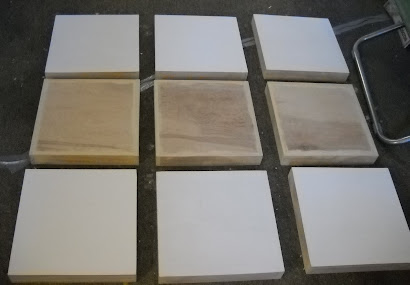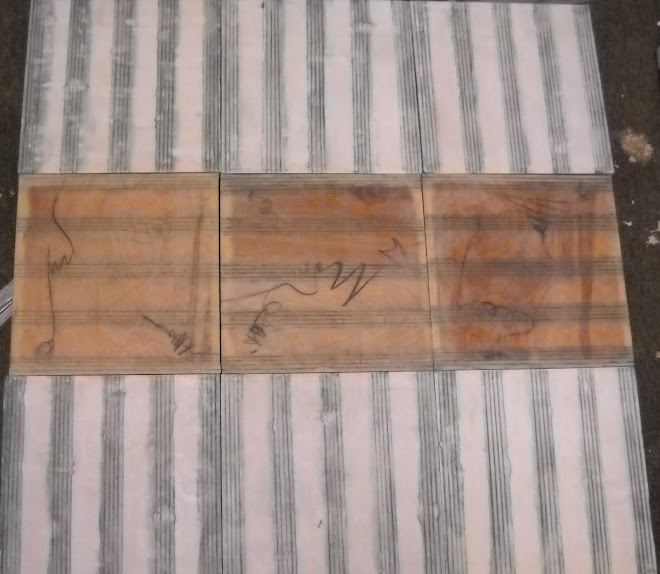
Unlike the Time Pit human reflection of the "Little Woods" staging area for the Killing Center in Birkenau, this series is more of the physical mechanics of the center and the methodical means by which million were killed. This series is still in the process and really good input in regards to the types of materials used in these panels were discussed with Alf, Shaun, Janice, and Taro. I am working my way through understanding how to use found materials and how to manipulate other materials making them my own. I think that it is important to use both past and present in all of my work. You can't have one without the other which is one of the reasons I have been using the "modern" wood and other materials in the paintings. The problem has been the integration of the antique barbed wire and other found materials. I plan on taking a class with Shaun and individual workshops with Alf to figure out how to manipulate metal as one of the inorganic components of my work. I need to explore this area more and hope to do so at another workshop I am having at Penland this summer (14 days of encaustic painting). One of the ways I am also trying to work out through process my concept is manipulating the substrate. In the close up, I cut out and inserted the "Judas Holes". I like it very much as it works well with the concept of the fragility of memory.




